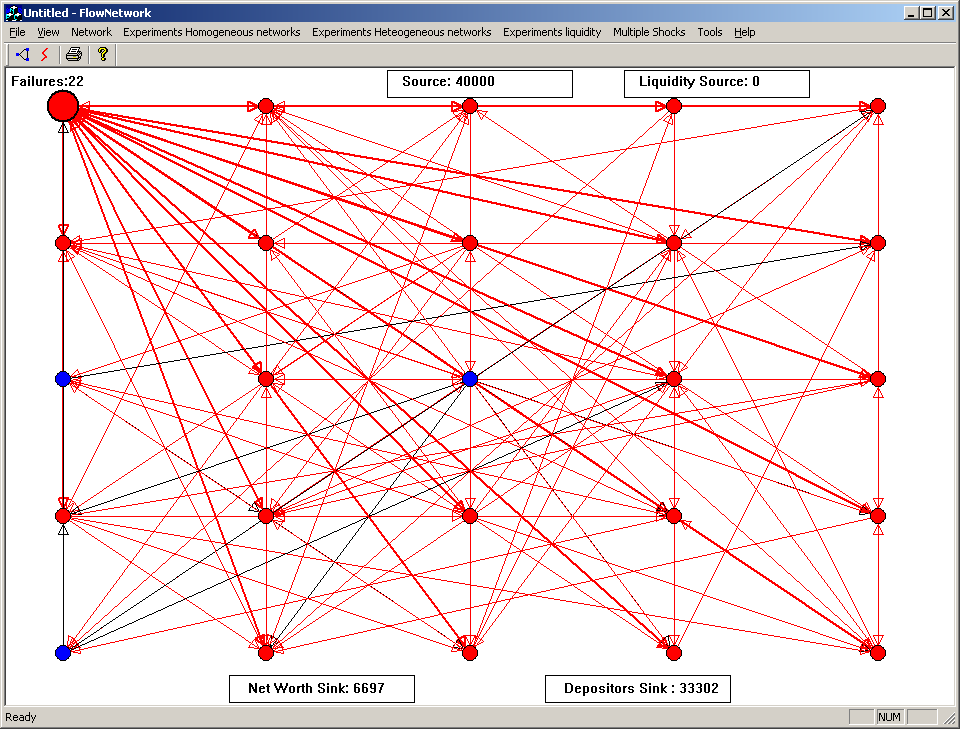Flow Network Simulator
Project with the Financial Stability Group at the Bank of England to study how systemic risk is affected by the structure of the financial system, using simulations based on random graphs. This simulator was programmed by Amadeo Alentorn, when he was a PhD student at the Centre for Computational Finance and Economic Agents (CCFEA). This was done for the publication: Nier, Erlend & Yang, Jing & Yorulmazer, Tanju & Alentorn, Amadeo, 2007. “Network models and financial stability” Journal of Economic Dynamics and Control, Elsevier, vol. 31(6), pages 2033-2060, June.
Click Here to run the latest version of the Flow Network simulator (Ver. 2.0 – 17-Nov-05)
Abstract
Systemic risk is a key concern for policymakers. In this paper we investigate the nature of systemic risk by examining how systemic risk is affected by the structure of the financial system. Using simulations based on random graph theory we construct banking systems that are composed of a number of banks that are connected by inter-bank linkages. We then vary the key parameters that define the structure of the financial system – including its level of capitalisation, the degree to which banks are connected, the size of inter-bank exposures and the degree of concentration of the system – and analyse the influence of these parameters on the likelihood of systemic defaults. A number of interesting results emerge. First, the better capitalised the banks are, the more resilient the banking system against contagious defaults. Undercapitalised banks can thus impose negative externalities on the rest of the system. Second, the effect of the degree of connectivity is non- monotonic, i.e. initially a small increase in connectivity increases the contagion effect; but after a certain threshold value, connectivity improves the ability of a banking system to absorb shocks. A similar result can be shown to hold for the size of inter-bank exposures. Finally, and importantly, more concentrated banking systems are shown to be prone to larger systemic risk, all else equal. In an extension to the main analysis, we study asymmetric structures. The key results are robust to this change. Moreover, the impact of asymmetry on systemic risk is shown to be non-linear. A number of these results may have important implications for public policy, which this paper also draws out.

Links/References
Watts, D. J. and S. H. Strogatz. 1998. Collective dynamics of ‘small-world’ networks. Nature 393:440-42. (PDF, 273 KB)
Newman, M.E.J. 2003 . The Structure and Function of Complex Networks. SIAM Review 45(2):167-256. (PDF, 2.15 MB)